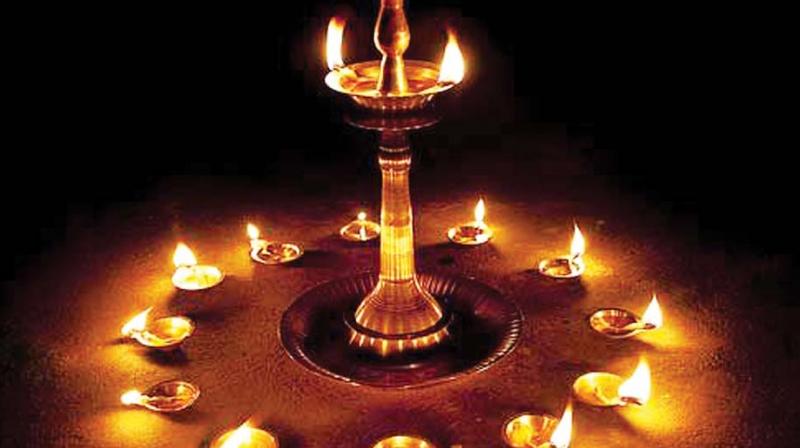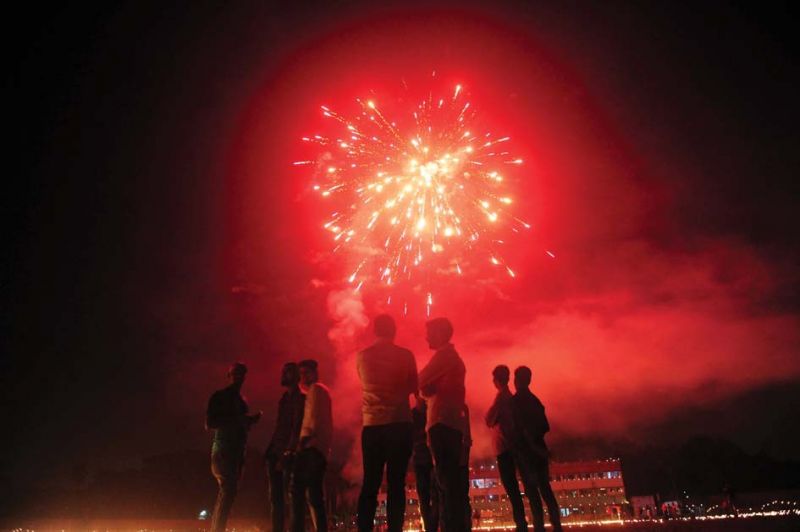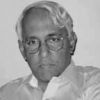Reflections: Deepavali or Diwali, North or South, it's good time for all

I was born into an orthodox Tamil Brahmin family, and nowhere are the hallmarks of orthodoxy more strictly observed than in our religious festivals. The plethora of rituals almost every month kept me in a constant daze, but the culinary feast that followed each auspicious day was mouth-watering. Deepavali, or the festival of lights (and noise), perhaps best typified the rigours and rejoicings in households such as ours. In Indian mythology Deepavali, amongst other things, symbolically celebrates Ravana getting his comeuppance against Rama — good prevailing over evil.
Let us examine these rigorous obsequies more closely. Deepavali dawned for our family well before the sun broke blearily over the eastern horizon. We were woken up at about 3.30 am or some such ungodly hour, our faces still deeply sleep lined. Before we realised what was happening, my mother would pour a ladleful of hot nalla ennai (gingelly oil) on our heads, and thereafter over the rest of our bodies. After allowing the sanctified unguent to soak into our system, we had to have our ‘oil bath’, and try as we might the sticky, oily feeling never left us for days.
 While some superficial concession is made for religious observances, the general idea is to have a good time.
While some superficial concession is made for religious observances, the general idea is to have a good time.
The shikakai podi (powder), in lieu of soap, only added to the pungent, but not unpleasant, odour we carried around for days on end. By half past four, we were dressed to kill in our brand new clothes, usually a bush shirt and a veshti, which were kept in the prayer room for divine blessings, liberally smeared with sandalwood paste and kungumam (kum kum) the stains of which, like the oil, never left our clothes. After paying our obeisance to all the Gods displayed in the puja room, it was time for some fun, though we were still groggy from sleep deprivation. The cuckoo clock had just tweeted five.
The ‘fun’ consisted primarily of lighting sparklers and bursting crackers, and various other exciting but potentially dangerous playthings like rockets, chakras and phooljadis (flower pots) that could have been seriously injurious to health. I have never known a single Deepavali pass without some poor child sustaining grievous bodily harm. If not properly supervised, irreparable damage could be done to one’s eyes, and the loudness of the crackers’ bursting has caused many a child's hearing to be permanently impaired.
I still believe my brother’s hearing problem was a direct consequence of a pataas going off before he realised the wick had even caught. Thereafter, stuffed with earphones and listening to the brilliant GN Balasubramaniam’s Todi or Kamboji all night long, could only have hampered his auditory canals further. For myself, I exercised adequate caution during the festival, keeping a safe distance from all incendiary objects, even at the risk of being branded a sissy. Discretion was the better part my valour.
Somehow the time had now crept up to 7 am, time for some toothsome bakshanams — crispy crunchies and a variety of sweetmeats. Any other kind of meat was unthinkable! After prostrating before our parents, we were expected to visit neighbouring friends and relatives and seek the blessings of our elders. Our house was also constantly visited by a number of family friends. It was more like a visitation. It must be said that the feeling of gaiety and good cheer was manifest, and the air reeked of a heady admixture of sulphur (from the crackers) and the medicinal but tasty lehiyam, a highly concentrated paste made of clarified butter and all manner of spices, deliciously sweetened with jaggery — a most efficacious digestive. The Ayurveda chappies are making a fortune out of lehiyam.
As the clock crawled towards 10 am, we were all ready for the traditional Deepavali lunch, with all the usual Brahminical fixings topped off with a delicious paayasam. By noon, after the exertions of a long morning, we could not keep our eyes open. The post prandial afternoon siesta was sound and deep. It also marked the end of the festivities, leaving us at a loose end. This is pretty much the way families like ours celebrated Deepavali.
Outside of south India, particularly in the northern states, and through poetic licence, that can be extended to include east and western parts of India (in fact, anything that is not the south of the Vindhyas), Deepavali metamorphoses into Diwali. Diwali, to the best of my knowledge, involves no rigours whatsoever. Only rejoicings, and how! They can wake up whenever they want, do whatever they like, and all the action happens after sundown. While some superficial concession is made for religious observances, the general idea is to have a good time. Good food, teen patti, the Indian equivalent of the well-known gambling card game, Flush or Poker.
The traditional Indian milk based stimulant, bhang, is consumed in large quantities and pretty much everyone gets sloshed to the gills. It’s all a bit Bacchanalian, but a rollicking time is a given. Dinner is late and the feast royal, and almost certainly not vegetarian. The sweets are rich and ma-ssively calorific. The north Indians don’t believe in doing things by half. They spread themselves high, wide and plentiful. And why not? It is supposed to be a fun festival after all. Rigour is strictly for their southern neighbours.
Days after the festive fireworks, our streets tend to resemble the blood spattered detritus of a battlefield. The red wrappings of the crackers, mangled sparklers and blackened flower pots turn our roads into a red sea. To say nothing of the sulphuric fumes and pollutants that remain heavily laden in the atmosphere. Small wonder the Supreme Court put the kybosh on the use of firecrackers in the capital till November 1.
So there you have it. Deepavali or Diwali, one festival in the same country, but celebrated in vastly different ways. The way I look at it, each to his own and there is no room for being judgmental. If the sense of unctuous religiosity is palpable amongst south Indians but missing in the north, the latter makes up for it by celebrating the festival in a markedly Rabelaisian and boisterous manner. Either way, it’s a public holiday and a splendid time is guaranteed for all. Just mind the fireworks.To all our readers, I extend a very happy, bright, colourful and safe Deepavali. And Diwali.

